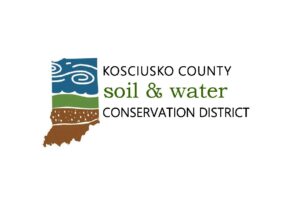Third Grade Programs
Third Grade Programs
The Lilly Center’s K-12 programs aspire to a high goal: develop water literacy in the children who will eventually lead our community. Students who engage with one or several of our programs leave with a deeper understanding of and appreciation for local water resources, as well as practical ways to care for them on their own.
Outdoor Field Trip Programs
Join us for a hike! Outdoor programs start at the Lilly Center and include hikes to the outdoor classroom and along the wetland trails. Students will experience nature up close as they learn about caring for our local water resources. Outdoor programs are offered in September, October, April and May. Students should dress for the weather and wear closed-toed shoes.
Essential Questions: What is an ecosystem? How does it promote the survival of its parts?
Description: Students will learn numerous reasons why we need wetlands and what they actually do. They will start with a hike to the Beta wetland and they will make observations on what they see. Then they will learn key terms like ecosystem, ecology, and habitat. After learning about a wetland they will each get to build their own wetland in a cup. Students will make observations on the water they are putting into their wetland and how they should layer the soil and rocks to create a successful wetland filter. At the end students will come back together and discuss what happened with their wetland design and how it might have been constructed to make it more effective.
Indoor Field Trip Programs
Our most popular learning experience! Students rotate through all of the following stations during their 2-hour visit to the Lilly Center. They will interact with live animals, the Virtual Aquarium and the Augmented Reality Sand Tables while learning about local water quality impacts.
Essential Question: What is a minnow/fish and what is their basic shape? Why do fish swim in groups?
Description: Students will learn all about fish and their features. They will also learn why fish tend to swim in groups. They will be walked through a slideshow to illustrate the different parts of a fish, giving them a chance to ask questions. After learning about the different features students will create their own stylized fish to put into the Virtual Aquarium. This STEAM activity is a favorite!
Standards:
3.CC.1: Engage effectively in a range of collaborative discussions on grade-appropriate topics and texts, building on others’ ideas and expressing personal ideas clearly.
3-LS2-1: Construct an argument that some animals form groups that help members survive.
LA2.D: Social Interactions and Group Behaviors :Being part of a group helps animals obtain food, defend themselves, and cope with changes. Groups may serve different functions and vary dramatically in size.
Essential Question: What is an ecosystem and what makes up an ecosystem?
Description: In this literature based program, students learn what an ecosystem is and the parts that make up an ecosystem. This includes: producer, herbivore, omnivore, carnivore, and decomposer. To learn more about ecosystems, we read the book Over and Under the Pond by Kate Messner. Then students will then be given different parts of an ecosystem and have to work together to put each piece in the right place to complete their ecosystem. For their activity, the students will get a card that will match one other person. They will need to find each other and figure out what part of the ecosystem they are.
Standards:
3-LS1-1: Develop models to describe that organisms have unique and diverse life cycles but all have in common birth, growth, reproduction, and death.
3.CC.1: Engage effectively in a range of collaborative discussions on grade-appropriate topics and texts, building on others’ ideas and expressing personal ideas clearly.
3.CC.4: Retell, paraphrase, and explain the main ideas and supporting details of a text read aloud or information presented in diverse media and formats, including visually, quantitatively, and orally.
Essential Questions: What is a microbe? How are they essential to soil health?
Description: Students will learn about the soil ecosystem and microbial life. At this station we will introduce students to soil and the amazing life forms living in it. Students will learn the 4 parts of soil, what a microbe is, and why microbes are important to soil ecosystems. Next, we will build Winogradsky columns that your students will take back to school to observe microbial colonies growing in the soil. Each class will build 2-4 columns with different soil types and nutrients to study how these differences impact microbial growth. Each teacher will receive a packet to take back to school that answers any questions about the columns and which also provides optional extensions for learning more about soils!
Standards: 3-LS4-3 and 3-LS4-4
This lesson is taught in collaboration with Kosciusko County Soil & Water Conservation District.
Ready to book a field trip?
Reach out to Grace St. Clair, lead education coordinator: stclagk@grace.edu.
